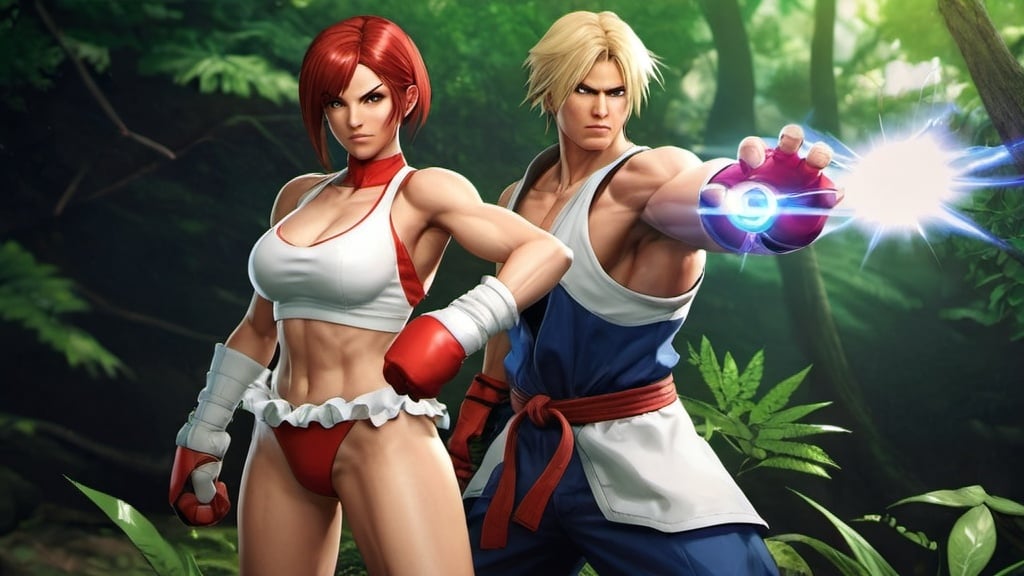While fighting games are primarily celebrated for their intricate combat mechanics and competitive multiplayer aspects, a compelling story mode can significantly enhance the overall experience.
It offers players not only the thrill of battle but also a deeper connection to the characters and the world they inhabit.
Street Fighter V:
Street Fighter V closes the narrative gaps within the iconic series, providing fans with a deeper understanding of its universe and character dynamics. This installment’s story mode is a rewarding journey for long-time followers and newcomers alike, enriching the franchise’s lore.
Soulcalibur VI:
Acting as a soft reboot, Soulcalibur VI reintroduces beloved characters and a fresh narrative perspective on the original game’s events. This approach revitalizes the series, offering both nostalgia and novelty in its story mode.
Mortal Kombat 9:
Renowned for its visceral combat and dramatic storytelling, Mortal Kombat 9 retells the saga of the first three games with a modern twist. The story mode is both an homage and a reinvention, captivating players with its detailed narrative and brutal confrontations.
BlazBlue: Continuum Shift:
BlazBlue: Continuum Shift excels in blending magical visuals with an intricate storyline. Its story mode dives deep into the game’s lore, offering a rich narrative experience alongside the thrilling 2D fighting mechanics.
Injustice 2:
Building on the foundation of its predecessor, Injustice 2 provides a compelling plot centered around Batman and his efforts to rebuild society. The game allows players to customize their favorite DC heroes and villains, adding a personal touch to the engaging storyline.
Tekken 4:
Praised for its atmospheric storytelling, Tekken 4 is often regarded as the pinnacle of narrative in the series. The game’s story mode offers a deeper exploration of its characters’ motives and relationships, set against the backdrop of high-stakes combat.
Dragon Ball FighterZ:
With one of the most extensive story modes in fighting games, Dragon Ball FighterZ requires approximately twelve hours to complete. This game is a must-play for fans of the series, offering a new adventure that feels both familiar and innovative.
Dead or Alive 5:
Known for its dynamic story progression, Dead or Alive 5 switches perspectives between characters, providing a comprehensive view of its narrative landscape. It stands out as one of the genre’s best implementations of a story mode.
Guilty Gear X2:
Guilty Gear X2 introduces a novel approach to storytelling in fighting games, with character-specific narratives that influence gameplay outcomes. The branching pathways ensure a unique experience for every player, depending on their in-game performance.
Soulcalibur 3:
Offering a hybrid of fighting, RTS, and RPG elements, Soulcalibur 3’s story mode is a unique endeavor in the genre. Players must strategize and battle to conquer opponents’ forts, adding a layer of depth and variety to the traditional fighting game formula.
What are the differences between the story modes in Street Fighter V and Dead or Alive 5?
The story modes in Street Fighter V and Dead or Alive 5 differ in several aspects:
Street Fighter V’s story mode consists of tiny chapters with one-round fights that can be completed quickly for each character, offering limited replay value. The game’s story mode takes inspiration from Mortal Kombat, incorporating gameplay within the narrative with one-round matches that lack significant challenge. Street Fighter V’s story mode features fully animated in-engine cutscenes, voice acting in English and Japanese, and backgrounds that vary per match, enhancing the overall storytelling experience. Players can control characters from the base roster and DLC characters, including unreleased ones like Juri and Urien, providing a preview of upcoming content. The difficulty levels in Street Fighter V’s story mode range from standard to extra difficulty, with the latter offering a more challenging experience typical of fighting games.
Dead or Alive 5’s story mode is structured into three acts: an introductory act that sets the stage, a tournament act featuring the Dead or Alive tournament itself, and a finale focusing on the ongoing plot of the franchise. The game’s story mode involves switching characters every few fights as the narrative progresses, offering a diverse gameplay experience and character perspectives. Dead or Alive 5’s story mode is praised for its ability to draw players into the game’s universe through engaging storytelling and character development, creating an immersive experience rarely seen in fighting games.
- The game’s story mode showcases a tournament within the narrative, providing a unique twist that adds depth to the overall storytelling.
- Despite its success, Dead or Alive 6 did not live up to the high standards set by its predecessor in terms of storytelling and player engagement.

